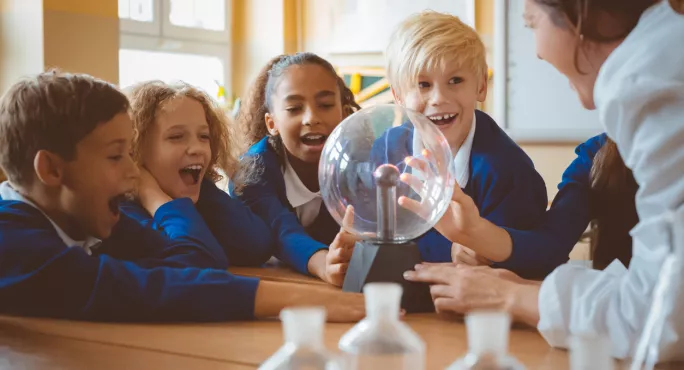- Home
- 4 ways to unearth every primary pupil’s inner scientist
4 ways to unearth every primary pupil’s inner scientist

“Every child is a scientist.”
I let the statement hang in the air for a few moments, the faces of the parents attending my curriculum workshop on primary school science are expectant, waiting for me to tell them all how their child “is the best young scientist I’ve ever had the privilege to teach”.
I don’t. They shift uncomfortably in their seats.
I continue and talk through an example of how children seem to investigate the world around them.
“When a toddler picks up a crayon and scribbles on the wall, it appears that they are doing more than just creating an artistic statement.”
A few nods of agreement, and smirks at recognition of this behaviour.
“Perhaps the toddler is looking at the results of their work, questioning, exploring, observing and concluding. Their conclusions invariably to exploring the length of your tethers.”
They chuckle and I’ve won them over to the idea.
For, if every child is indeed a natural scientist - and I believe they are - then it is our job to bring this out in all of them.
To provide them with opportunities to explore in both structured and unstructured ways. Through a contextualised, skills-based approach, we can feed this curiosity and leave them wanting more.
How to get primary pupils into science
After spending more than 15 years teaching science to children, as both a specialist and class teacher, here are four ways I’ve found that can foster a curiosity-laden environment for your young charges.
1. Find science in everything
I’ve collected rocks since I was 6. Not a collection of fine jewels and gems. Actual grey rocks. Whether children collect rocks, stamps, leaves or little plastic dragons, they are being scientists.
Without thinking, they are grouping and classifying, taking careful observations and describing, comparing and contrasting.
Science is everywhere, and scientific behaviours are in everything we do. From measuring and observing reactions when baking, to formulating conclusions after being presented with facts and figures in the evening news.
One of the best things we can do for our students is to recognise, support and hone these scientific skills in all areas of their lives.
2. Let them lead the way
Science is curiosity.
We must let children explore and have ownership of their exploration. One way to achieve this is to involve the class from the beginning.
Approach a unit of work with a genuine interest in what the children already know, and what they want to find out.
Letting them lead the conversation brings out their genuine interest in topics and constructs a shared medium-term plan for their learning journey. For example, watching children explore battery-operated electronic toys, taking them apart and short circuiting them, may reveal an insatiable curiosity around circuits.
They might ask questions like “why do both lights light up?” or “why does this turn it off and on?”
You can then plan a learning journey that incorporates their ideas but furthers their understanding of circuits and electricity. More importantly than all of this, it helps you get to know them, their interests and what makes them tick.
3. Answer their questions in the right way
“That’s a good question!” has become my favourite initial response to children.
It both validates their question and gives me some breathing space to compose my answer.
I don’t shy away from using tricky vocabulary and explanations - I’ve yet to meet a child who doesn’t love new, complicated-sounding words, and anyone who has heard a four-year-old try to say Parasaurolophus will know this, too!
Sometimes their questions can be answered right away, sometimes they can’t. Never be put off saying “I don’t know” - showing your vulnerability tells children that it’s OK to not know everything.
Push the question back to the class, admit when you don’t know the answer and commit to finding out.
And this commitment is key. If the question goes up on the shared medium-term planning, then you show validation of their question, and commitment that you will find out together.
4. Let them fail
Children fail, just as we all do. But we must help children fail and nurse them through the shame and embarrassment of it to help develop their resilience and future willingness to think outside of the box with critical minds.
Every year I show the effervescent reaction between vinegar and a rock containing calcium carbonate, and then set children the challenge to perform an acid test on a rock they have found in their garden.
Excitedly, the children hypothesise that their rock will: “fizz more!”, “explode!” or “change colour!”
Their eventual realisation that the world has not ended because their hypothesis was disproven (because their rock is perhaps granite), gives me an opportunity to coach them through the feeling of failure, and the importance of learning from it.
Give your class permission to fail and make sure they are failing forward through your dialogue and feedback.
Tom Collins is a primary science specialist teacher, and Steam departmental leader at the British International School of Chicago - Lincoln Park
Keep reading for just £1 per month
You've reached your limit of free articles this month. Subscribe for £1 per month for three months and get:
- Unlimited access to all Tes magazine content
- Exclusive subscriber-only stories
- Award-winning email newsletters



